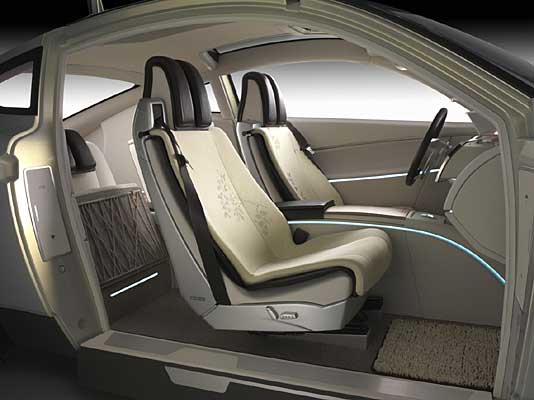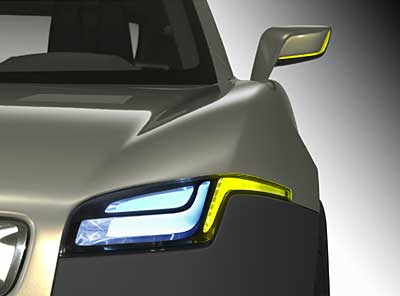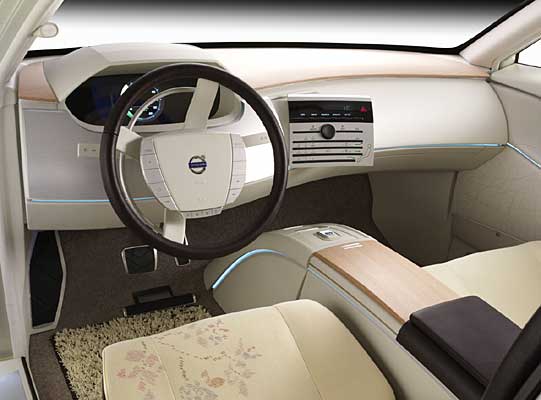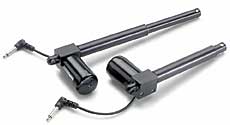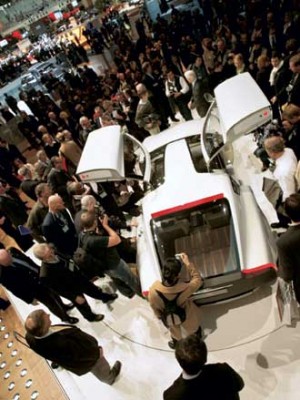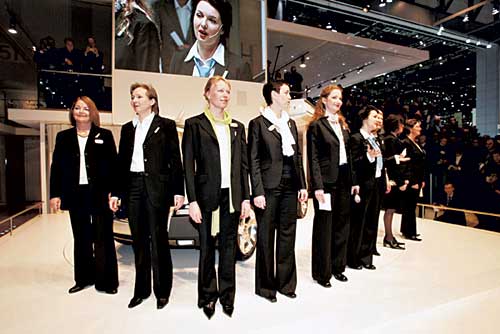In the driver’s seat
Volvo has unveiled a concept car specifically aimed at the professional and independent woman. And, to better focus on the woman’s point of view, Volvo put together an all-woman team to lead the project.
Summary
Six SKF CATR 21 actuators have been used in “Your Concept Car.” Two CATR 21 actuators can be found inside the instrument panel directly behind the steering wheel.
There is also an actuator to control the headrest and one to control the height of the safety belt. In addition, two actuators in the front seat lower the flanks of the seat pad to facilitate getting in and out of the car.
The modular design of the CATR 21 actuator makes it easy to interchange critical components to build a custom actuator. This flexible feature was one of the reasons why CATR 21 was chosen for YCC.
“In addition, we wanted very silent actuators, and ones that didn’t take a lot of space because space was a problem,” says Shahriar Ravari, project manager for the electrical and telematical systems of YCC. “Those two criteria were very important in our choice.”
SKF has also delivered a number of ZDV control boxes for the actuator control.
Volvo has unveiled a concept car specifically aimed at the professional and independent woman. And, to better focus on the woman’s point of view, Volvo put together an all-woman team to lead the project.
When Volvo’s “Your Concept Car” made its debut at the Geneva Motor Show in March, it caused something of a stir. Featuring a gull-wing design, the vehicle has a futuristic look, and it is laden with advanced and high-tech features. But the target user is what Volvo calls the “premium” woman – the high-income professional woman with specific wants and needs. The concept car project team has fondly named this target consumer “Eve” and sees her as a fiercely independent, socially active, family-minded person, always on the go.
“She wants the car to take care of her rather than having to take care of the car,” says Tatiana Butovitsch Temm, the project’s communications manager. “She wants things her way.”
No doubt, Eve reflects what market trends and statistics point to – that professional women are a growing and demanding customer segment.
Behind the wheel
The leadership team behind the creation of the car was made up of eight women. None of the members had any prior experience in leading a concept car project, and this was something the team saw as an advantage.
“We didn’t have any preconceptions. Instead, we were open to different ways of doing things,” explains Temm.
The greatest strength in the way the team worked was how they communicated and reached decisions. There was very little “prestige” thinking, Temm says. “All decisions were made during the meetings, not in the corridors before or after the meetings,” she recalls. “If there was a wrong decision, we went back and revised it. There was no ego standing in the way.”
The team members report that communicating with their female colleagues has been a liberating experience. “It’s a relief coming into a situation where we can be quickly understood because we are speaking the same lingo,” says Lena Ekelund, deputy technical manager of the project. “When you talk to the guys, you need to tailor what you say so they can understand you. Talking to the girls, you don’t need much tailoring to get the message across.”
The team has also had to communicate a lot with suppliers and customers. One supplier, Anna-Karin Longnell, business engineer at the Automotive Division of SKF, says: “They involve more people and talk more about what they are doing. Maybe that’s the female way of working, communicating and networking. That’s what I see as the main difference in the project.”
In addition, the team has sought “female interfaces” in choosing suppliers. “It hasn’t been a requirement, but it has been a desire,” says Temm.
However, male consultants were invited on the project, and one example of this is Shahriar Ravari from Consat Engineering in Gothenburg, Sweden. As project manager for the electrical and telematical systems of YCC, he introduced, among other things, the SKF actuator for linear motion in the car.
Having worked as a consultant at many male-dominated companies, he says that females do have a harder time proving themselves. “But,” he says, “the team have done a very good job in planning the project. They made crucial decisions at the right time for the right purposes. I’m very impressed with their work, especially their professionalism and the time and effort they put into the project.
The budding idea
The notion of “Your Concept Car” appeared in the late 1980s when a female customer reference group was started within Volvo, followed by a customer focus group in California made up of potential female customers. These groups tested new cars and provided feedback, resulting in a number of features found in Volvo cars today.
“So we asked, ‘What happens if only women get to make a car and make all the decisions?’” recalls Temm. The next logical step was to make this idea a reality.
“To really influence the project, we felt that women should make all the decisions about the car. That’s why we formed this group,” says Camilla Palmertz, project manager. “But we’re not excluding men.” In fact, she points out, a lot of men worked in the project as well.
In June 2002, Palmertz and Temm and others in the team presented the idea to Volvo’s president and CEO Hans-Olov Olsson, who welcomed it with interest and support. They received a green light for the project in October 2002. In December 2002, the team received the necessary funding. From this point until the car’s launch in Geneva, it took only 14 months.
Magnus Johansson was the human resources director at Volvo when the project began. He currently works at SKF as Group Six Sigma Champion. Johansson describes YCC as a grassroots project instead of a top-down HR project and recalls encouraging the team not to focus too strongly on the gender issue. “It mustn’t become a project allowed or accepted just for the sake of showing that Volvo Cars is a company that offers equal opportunities to both genders,” he remembers telling the team.
But, Johansson says, the project has raised the awareness of the talents of the women staff members. “It shows that Volvo is an open company and dares to face new challenges,” he says. “It is a very powerful eye-opener, and it can teach us a lot. The way this was done and presented differs very much from a traditional project, and it shows that there are other ways to do things.”
An oyster containing many pearls
Volvo’s “Your Concept Car” is designed to emphasise convenience, visibility, ergonomics and storage and is targeted at what Volvo terms the “premium” woman.
Among the many features of this concept car are the spoon-shaped front seats with sides that drop to make getting in and out of the car easy; a split head rest for those who wear pony tails; a centre console that slides open to reveal a sizeable storage space for a handbag, a laptop and a cool box. The placement of this storage space between the two front seats is possible because the gear shift controls are situated on the steering wheel.
The typical three-person back seat has given way to two cinema-style fold-up seats as a way to make easily accessible storage for shopping bags and luggage.
In addition, to help with parallel parking, the car is equipped with a “Space Check” sensor (new on the market) that tells the driver if the car is able to fit into a particular space. When the assistance button is pressed twice, the steering wheel moves automatically to drive the car into the parking spot while the driver controls the gas and brake. “Then you can go out and shine. The car makes you look great!” says Lena Ekelund, deputy technical manager for the project.
Although engine power was not considered a high-importance item, the car features an extremely powerful ISG60V five-cylinder, 2.4-litre PZEV engine with a high-pressure turbo (partially zero emission vehicle), which means the engine shuts off when the car stops at red lights, reducing exhaust.


